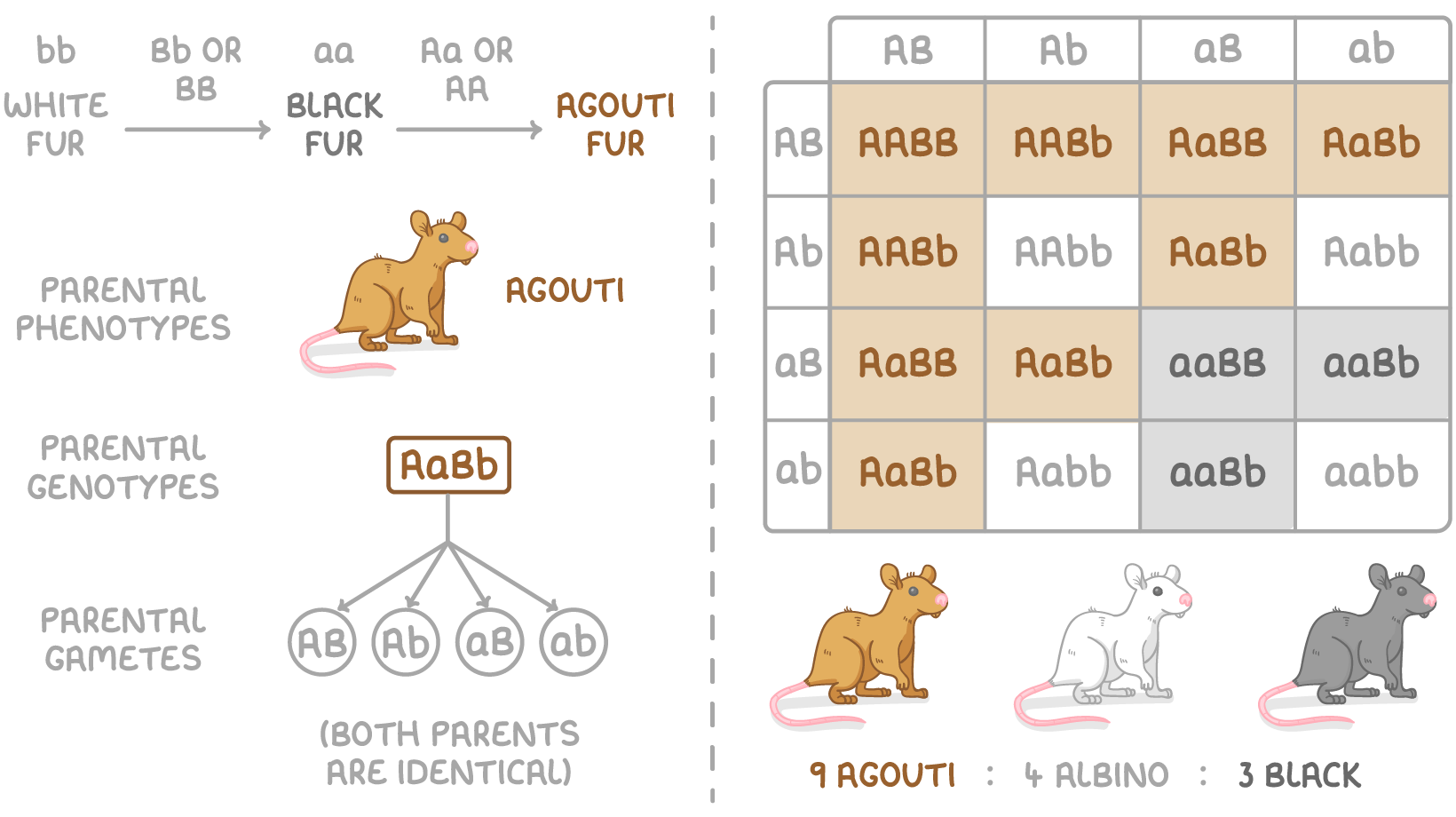Epistasis
This lesson covers:
- What epistasis is
- An example of epistasis in coat colour genes in mice
- Biochemical pathways demonstrating epistasis
- Dominant and recessive epistasis
What is epistasis?
Epistasis is an interaction between genes where one gene affects or masks the expression of another gene. Specifically, it occurs when genes on different chromosomes interact to influence the same phenotype. This leads to unexpected phenotypic ratios from crosses.
A hypostatic gene is the gene whose expression is blocked by another gene. An epistatic gene is the gene whose allele affects the expression of the hypostatic gene.
An example of epistasis in coat colour genes in mice
An example of epistasis is seen in the genes that control coat colour in mice. There are two specific genes involved in this process.
Gene A:
- This controls the banding pattern of black pigment (melanin) in hairs.
- The dominant allele (A) leads to banded hairs, producing a brown ‘agouti’ coat colour.
- The recessive homozygous genotype (aa) causes solid black hairs.
Gene B:
- Controls overall melanin production.
- The dominant allele (B) allows melanin production.
- The recessive genotype (bb) blocks melanin production, resulting in albino white coats, and masks the effect of gene A alleles.
If you were to cross two heterozygous agouti mice, this epistatic interaction leads to unusual phenotypic ratios in genetic crosses.

The phenotypic ratio isn’t the usual 9:3:3:1 that we see with non-epistatic dihybrid crosses between two heterozygotes. Instead, the ratio of mice with agouti (brown) to albino (white) to black fur is 9:4:3.
Epistasis in biochemical pathways
Epistasis also occurs in the interactions between genes coding for enzymes in biochemical pathways.
For instance, the pathway might be for the production of a pigment that produces red flower colour in petals.

If any one of the enzyme genes is not expressed, that step in the pathway is disrupted. This prevents the production of the intermediate substrate needed for the next enzyme in the sequence. As a result, the phenotype lacks the pigment, even if other genes are expressed. An early blocked step masks the activity of downstream genes in the pathway.
Dominant and recessive epistasis
There are two types of epistatic interactions. The key difference is whether the epistatic allele needs to be recessive or dominant to exert its masking effect.
Recessive epistasis:
- Occurs when the epistatic gene must be homozygous recessive to block the expression of the hypostatic gene.
- An example is homozygous recessive alleles for gene B in the coat colour of mice blocking the expression of gene A.
Dominant epistasis:
- Occurs when the epistatic gene is dominant and actively modifies or blocks the expression of the hypostatic gene.
- Only one copy of the epistatic allele is needed to prevent the expression of the hypostatic gene.